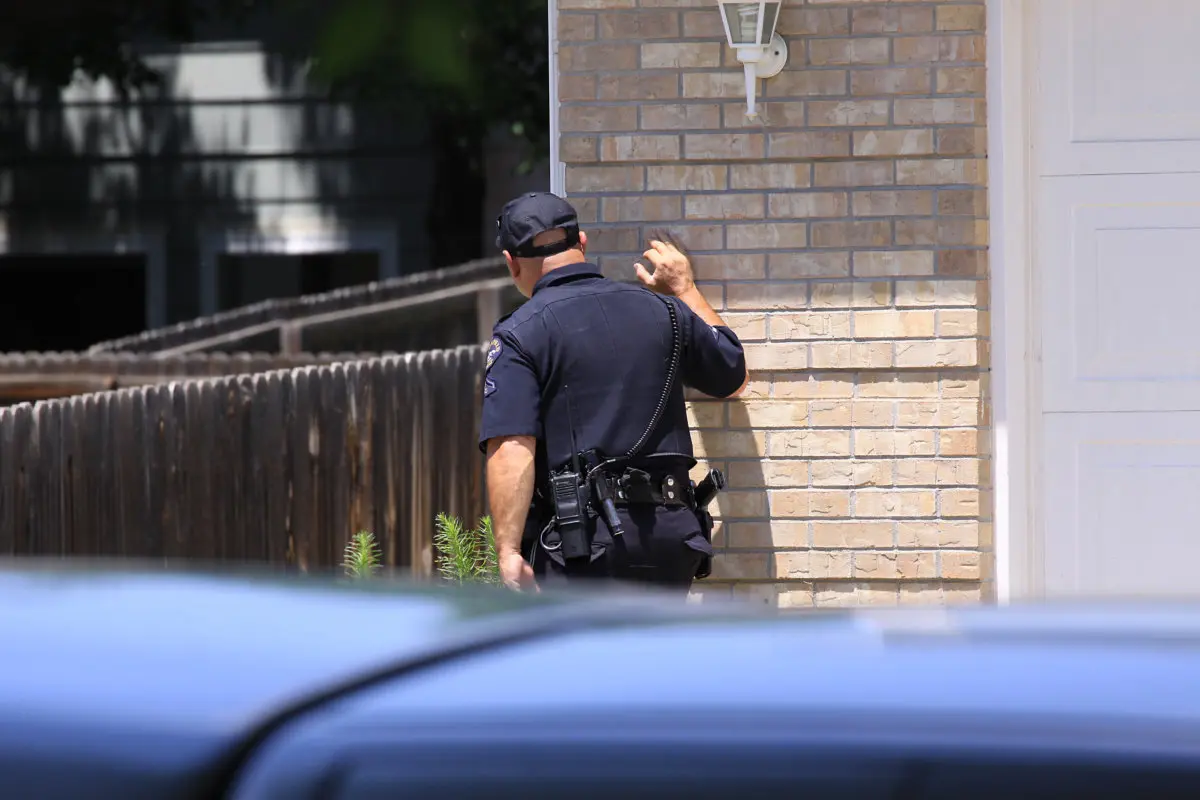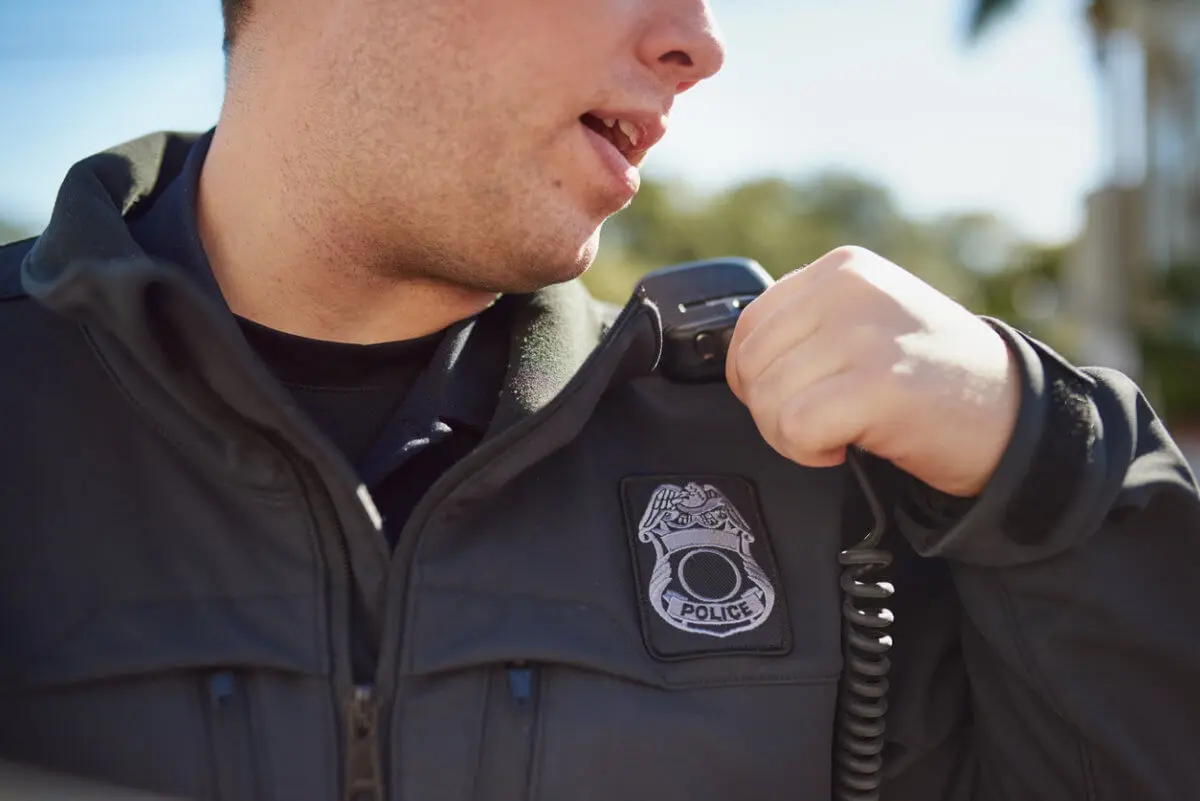Law Enforcement Liability – More Police Reform in Colorado: House Bill 24-1372 Establishes New Restrictions and Requirements for Use of Prone Restraint

The 2024 Colorado legislative session included additional bills addressing law enforcement operations. Prominent among the bills passed is House Bill 24-1372 (also, “HB 1372” or “the Bill”), which establishes new restrictions and requirements for use of prone restraint.
Read the CIRSA Blog Post, written by Jonathan Abramson and Julie Nikolaevskaya of the law firm SGR, LLC, for a summary of the key requirements of the Bill, which is now the law in Colorado. CIRSA member law enforcement agencies will want to ensure they are familiar with the bill’s requirements and are taking the steps needed to ensure compliance.
Law Enforcement Liability Resources – Police Executive Research Forum (PERF) September 2024 Report

15 Principles for Reducing the Risk of Restraint-Related Death
As you know from CIRSA’s recent Blog Post, written by Jonathan Abramson and Julie Nikolaevskaya of the law firm SGR, LLC, the Colorado Legislature recently adopted House Bill 24-1372 (the “Bill”) establishing new restrictions and policy and training requirements regarding the use of prone restraints by law enforcement. Among other requirements, the Bill requires law enforcement agencies to adopt written policies and procedures concerning officers’ use of the prone position and prone restraint by no later than July 1, 2025. Also, beginning on or before July 1, 2026, each agency required to adopt policies and procedures must implement and train its officers on the provisions of the policies and procedures.
In the wake of high-profile incidents around the county, legislative and media attention on the use of the prone position and prone restraint has increased, both in Colorado and around the county. But, the Police Executive Research Forum (PERF) recently observed, “much of the public discourse on the subject has focused on the terminology that is used to describe these incidents” with these “public debates about language ‘avoid[ing] the harder issue of how police, EMS, and others can improve their response to medical-behavioral emergencies.’” To address this gap, PERF, in September 2024, published a report titled 15 Principles for Reducing the Risk of Restraint-Related Death, intended to provide guidance on how to handle situations that may necessitate restraint but also could pose a heightened risk to the individual being restrained. While the PERF Report is not intended for direct adoption by law enforcement agencies, it provides guiding principles that may be a useful resource for members’ law enforcement policymakers who are involved in the development of written policies and procedures pursuant to the Bill. A copy of the report can be accessed at the above link.
Law Enforcement Liability – Senate Bill 23-254 Makes Significant and Immediate Changes to Search Warrant Requirements

This article was written by Eric M. Ziporin and James T. Kadolph of the law firm of SGR, LLC. The firm is a member of CIRSA’s defense counsel panel and provides legal services to CIRSA and its members in a wide variety of claims including law enforcement liability claims. The authors welcome any questions regarding this article and can be reached at 303.320.0509.
Editor’s Note: If your city or town is a CIRSA member, CIRSA will, as a service to its members, make available the assistance of one of its defense panel attorneys to review and comment on your draft updates to any of your policies that are prepared to address the requirements of Senate Bill 23-254. CIRSA will provide up to three hours of attorney time to your entity for this assistance, at no member expense. This service is not a substitute for legal and other advice from your entity’s city or town attorney, police legal advisor, and law enforcement professionals. If your entity would like to obtain this CIRSA assistance, please call or email Sam Light, CIRSA Deputy Executive Director/General Counsel, at 720-605-8002 or saml@cirsa.org.
Printable Version
Law enforcement reform continues in Colorado with each passing legislative session. Once again, reform has come to our State, likely by way of reaction to events that did not even occur in Colorado. The 2023 legislative session saw the passage of Senate Bill 23-254, which has changed the way that search warrants will be executed in Colorado.
Colorado Governor Jared Polis signed Senate Bill 23-254 into law on June 6, 2023. Given that this bill was signed with a safety clause, the bill took effect immediately that day. All of the bill’s new requirements explained in this article are now the law in Colorado.
The bill makes two significant structural changes in Colorado law. First, it imposes a new requirement for an officer to obtain a “no-knock” search warrant. Second, it changes to when an officer may enter a structure without a warrant, without announcing themselves (known as a “no-knock” search warrant).
To obtain a no-knock search warrant, an officer must now show that the no-knock entry is necessary because of a credible threat to the life of any person, including the peace officers executing the warrant. This is in addition to requirements already in place prior to the enactment of Senate Bill 23-254, including that there be a specific request for the issuance of a no-knock search warrant and that the requested affidavit has been reviewed and approved for legal sufficiency and signed by a district attorney. The effect of these changes is discussed further below in this article.
Senate Bill 23-254 also modifies the manner in which search warrants for a dwelling may be executed. First, the timing of the execution for those warrants is now limited to between 7 a.m. to 7 p.m. unless a judge expressly authorizes the execution of that warrant at a different time. Second, an officer executing a warrant must either be in uniform or wearing a visible law enforcement badge and must wear and activate their body-worn camera. Third, an officer executing a warrant must clearly identify themselves as a law enforcement officer, knock at the door of the dwelling, announce their presence loudly, and delay entry for a reasonable amount of time to allow someone to come to the door (and also wait if the officer has reason to believe someone is coming to the door with the intent of voluntarily allowing the officer to enter).
The three requirements above must be followed unless one of two possible conditions are met. First, an officer may choose to not follow the three requirements above if they have a no-knock warrant. Second, an officer may ignore the above requirements if the officer (at the time of executing the warrant) learns of an emergency threatening either the life of or grave injury to a person. Importantly, that emergency cannot be created by law enforcement.
Senate Bill 23-254 has dramatically changed when “no-knock” warrants may be obtained from a judge. Previously, a no-knock warrant could be obtained to prevent the destruction of evidence if that was deemed to be likely to happen if a standard “knock and announce” warrant were to be executed. Now, the potential destruction of evidence is explicitly deemed not to be a permissible reason to execute a no-knock warrant. Instead, an officer may only apply for a no-knock warrant when the service of a knock-and-announce warrant would pose a credible threat to the life of any person. Because of this, no-knock warrants are significantly less likely to be signed by judges.
Because there will be much fewer no-knock warrants granted, the changes to the requirements for the execution of knock-and-announce warrants matter significantly more. Officers will need to be keenly aware of the timing of the execution of search warrants on residences and will need to be prepared to allow sufficient time for any resident to answer the door.
In light of this new law, it is recommended that CIRSA members examine their policies and procedures concerning the application and execution of search warrants and update them where an update may be needed to comply with the new requirements of Senate Bill 23-254. If your member agency would like the assistance of one of CIRSA’s defense panel attorneys to review and comment on your draft updates, please call or e-mail Sam Light, CIRSA Deputy Executive Director/General Counsel, at 720-605-8002 or
saml@cirsa.org.
If you have questions regarding this article, please call our Liability Hotline at 720-605-8002 to speak to CIRSA’s General Counsel, Sam Light.
Active Bystandership for Law Enforcement (ABLE) Training Program

CIRSA is excited to announce our inaugural ABLE 8-Hour Core Training Programs. Six events will be hosted around the state covering the key components of the Active Bystandership Program.
ABLE builds upon the training developed by Dr. Ervin Staub, and the New Orleans Police Department to teach officers the tools to intervene and receive intervention regardless of rank. Developed in 2014, the program has reached 324 agencies across 41 states and growing, has trained over 2,000 instructors, and educated more than 160,000 officers at ABLE agencies.
View the brochure for more information about the ABLE Training Program and to RSVP for one of our regional training events!
2023 CIRSA Law Enforcement Endowment Fund

Given the rise in police liability claims, we are redirecting funds from the CIRSA Scholarship and Timothy A. Greer Endowment programs towards resources that will promote excellence in law enforcement practices and procedures, with the goal of reducing law enforcement risks.
Members will need to apply for funds from the Law Enforcement Endowment before May 2, 2023 and applications will be considered on a case-by-case basis.
For more information, visit our Law Enforcement Endowment page.
New Executive Order – May 25, 2022

On May 25, 2022, President Biden signed an Executive Order on Advancing Effective, Accountable Policing, and Criminal Justice Practices to Enhance Public Trust and Public Safety. While the Executive Order’s direct impact is limited almost exclusively to federal law enforcement agencies, it does have several provisions addressing law enforcement operations that will be very familiar to Colorado law enforcement agencies.
For example, the Executive Order addresses—again, for federal law enforcement agencies—issues such as body-worn cameras, use-of-force techniques, and collection of demographic data regarding law enforcement contacts—all subjects addressed in Colorado’s police reform legislation passed in 2020 and 2021. The Executive Order also mandates that several federal agencies develop guidance regarding best practices to share with local, state, and other law enforcement agencies on a variety of topics including officer recruitment and retention, officer wellness, conduct of certain independent investigations, and community communications. Thus, the Executive Order will at a minimum lead to future guidance resources for local law enforcement agencies and may serve as a blueprint for further Congressional action.
If your agency desires to learn more about the Executive Order, you can read the full Order here. You can also find the International Association of Chiefs of Police (IACP) Policy Fact Sheet on the Executive Order here. The IACP Fact Sheet includes a Key Points/Background on the Order and an outline of the policy provisions in key sections of the Order.
2022 CIRSA Law Enforcement Regional Roundtables

CIRSA is excited to announce the 2022 Law Enforcement Regional Roundtables. Eight events will be hosted around the state covering a variety of pertinent law enforcement issues, emerging and current police liability concerns, and other topics requested by law enforcement. These seminars are open to all member police departments and risk control contacts. We hope that you can join us! Please pass this on to other staff who may be interested in attending.
For more information and to RSVP, view the brochure.
Law Enforcement Liability – New Requirements Regarding Peace Officer Credibility Disclosures and Eyewitness Identification Techniques

During its 2021 session, the Colorado Legislature passed two bills that require law enforcement agencies to adopt written policies and procedures. Senate Bill 21-174 relates to peace officer credibility disclosures and requires law enforcement agencies to adopt policies by January 1, 2022. House Bill 21-1142 relates to eyewitness identification techniques and required agencies to adopt written policies by November 15, 2021. HB 21-1142 also requires agencies to collect data regarding their use of eyewitness identification techniques (or showups) starting January 1, 2022.
Below is a summary of each bill and information regarding what policies and procedures must be adopted by your law enforcement agency. Also included are links to each bill and to drafts of the model policies developed by the policy drafting committees created by the bills.
SB 21-174 – Peace Officer Credibility Disclosures was enacted to provide more consistency in reporting concerns regarding the credibility of peace officers. The bill formed the Peace Office Credibility Disclosure Notification Committee, which was tasked with creating a statewide model policy for peace officer credibility notifications. The legislation mandated the model policy address circumstances when a law enforcement agency must notify its district attorney’s office of certain investigations and findings related to its law enforcement officers.
By January 1, 2022, each law enforcement agency is required to adopt and implement written policies and procedures consistent with the statewide model for peace officer credibility notifications. Most law enforcement agencies have existing policies relating to what is commonly referred to as Brady notifications (Brady v. Maryland, 373 U.S. 83 (1963).) Those policies should be reviewed to ensure they are consistent with and encompass everything in the statewide peace officer credibility notification model policy. If your law enforcement agency does not have written policies addressing Brady notifications, it must adopt policies consistent with the model policy by January 1, 2022.
A link to a draft of the statewide model policy can be found here (CIRSA member website access required) or by contacting CIRSA General Counsel Sam Light, at saml@cirsa.org.
A link to SB 21-174 can be found here.
HB 21-1142 – Eyewitness Identification Techniques mandated every law enforcement agency that requires its officers to be POST certified, adopt written policies and procedures concerning eyewitness identifications by November 15, 2021, review such policies every five years, AND collect data relating to identification techniques. The Legislature found that showup identifications are disfavored as inherently suggestive and are likely to yield false identifications and therefore are admissible only when the prosecution can demonstrate law enforcement’s strict compliance with showup requirements.
The legislation formed a committee to develop and recommend model policies and procedures. Those model policies have not yet been finalized, but a link to a draft of the policies can be found here (CIRSA member website access required) or by contacting CIRSA General Counsel Sam Light, at saml@cirsa.org.
Additionally, beginning January 1, 2022, each law enforcement agency that uses showups must collect the following data related to those identification techniques:
- The date, time, and location of the showup;
- The gender, age, and race of the subject and eyewitness in the showup as determined by the law enforcement officer’s perception or the subject’s identification or retrieved from a database accessible by law enforcement;
- The alleged crime; and
- The outcome of the showup.
Beginning January 1, 2023, the above data must be reported to the Division of Criminal Justice.
HB 21-1142 also outlines when a law enforcement officer may use a showup. A link to the legislation can be found here.
While neither recent bill expressly creates any new legal causes of action, a failure to adopt and implement appropriate policies regarding law enforcement operations can be a source of potentially significant liability under existing federal and state law.
Every law enforcement agency should review its policies and procedures to ensure compliance with the above legislation. If your agency would like CIRSA assistance, please reach out to CIRSA General Counsel Sam Light, at saml@cirsa.org.
-The above article was prepared by Jenna Roth, Esq. of the law firm of Michow Cox & McAskin, LLP
Law Enforcement Liability – Courts Say “Go” and “No Go” to Vehicle Tows Under the Community Caretaking Rationale

If you’re a peace officer employed by a CIRSA member, you can readily imagine this scenario: You arrest the driver of a vehicle on a warrant – you impound the vehicle for safekeeping – you perform an inventory search – you find illegal drugs and weapons and charge the defendant – and the evidence is admissible in court because the impoundment was constitutional under the community caretaking rationale.
Easy enough, right? In fact, if you’re a veteran officer, you’ve probably experienced this or similar scenarios several times in your career. After all, vehicle impoundments are a common occurrence and can be a potential source of liability. And one other thing: If you’ve been following court decisions on law enforcement activities, you’ve noticed there has been a slew of appellate court decisions in recent months on the constitutionality of impounding vehicles under the “community caretaking” rationale.
Our most recent Blog Post, “Law Enforcement Liability: Courts Say “Go” and “No Go” to Vehicle Tows Under the Community Caretaking Rationale,” is intended to summarize the recent cases and walk you through the factors the courts used to determine if an impoundment using the community caretaker rationale is constitutional. While this liability alert is not intended as a substitute for specific training on your entity’s vehicle impoundment policies, it is designed to aid your review of your current policies in light of the recent court decisions.
For more information about how the courts in these recent cases have narrowed the use of the community caretaking rationale, which in turn has broadened your entity’s risk exposure, read our Blog Post.
House Bill 21-1250 Whistleblower Protections and Requirements

All law enforcement agencies across Colorado know what it means when a person refers to “SB 20-217,” “the law enforcement integrity act,” and “HB 21-1250,” the 2021 legislation that amended certain provisions of SB 20-217 and enacted further measures concerning law enforcement accountability.
However, you may not know that—buried beneath the provisions in HB 21-1250 relating to body-worn cameras and use of force—there is a new statute that addresses retaliation against whistleblower peace officers.
For more information about the new peace officer whistleblower protections, including mandatory training and posting requirements for law enforcement, read our most recent Blog Post.









